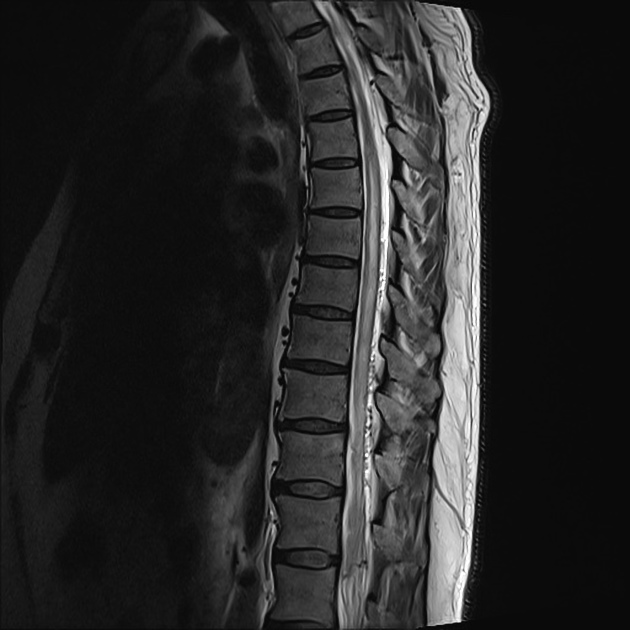Redundant nerve roots of the cauda equina refer to the elongated, enlarged and tortuous cauda equina nerve roots immediately proximal to high-grade lumbar canal stenosis.
On this page:
Pathology
Redundant nerve roots of the cauda equina result from chronic compression of the nerve roots at the site of severe compression.
Radiographic features
Redundant nerve roots of the cauda equina can be best appreciated on spinal MRI or myelography.
MRI
Redundant nerve roots are seen as thickened, elongated, and tortuous nerve roots in the subarachnoid space proximally near high-grade spinal canal stenosis 2.
T1: isointense to CSF
T2: hypointense, thickened, tortuous nerve roots in the subarachnoid space.
T1 C+ (Gd): no enhancement
History and etymology
The feature of redundant nerve roots was first described by the Dutch neurosurgeon Hendrik Verbiest in 1954 1,3 and later the term was coined by the American neurosurgeons Marvin R Cressman and Ronald P Pawl 2-4.
Differential diagnosis
dilated radicular veins









 Unable to process the form. Check for errors and try again.
Unable to process the form. Check for errors and try again.